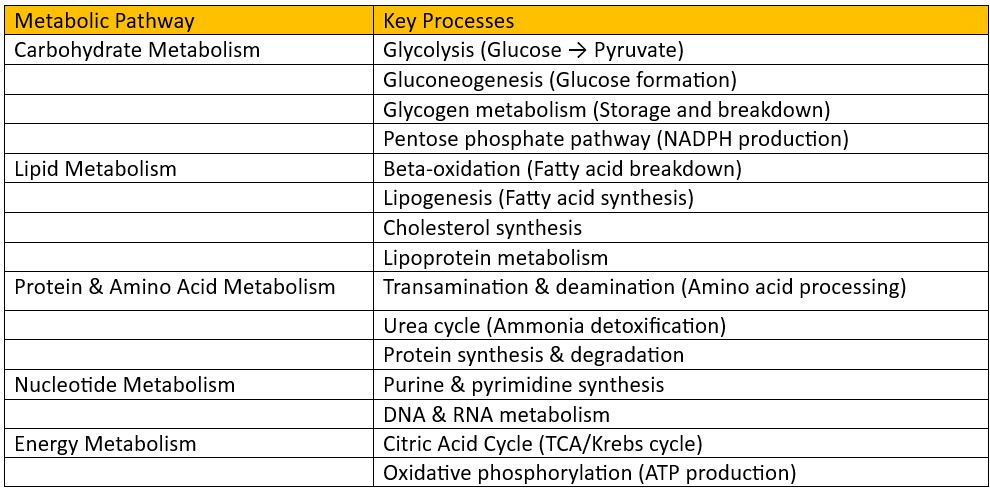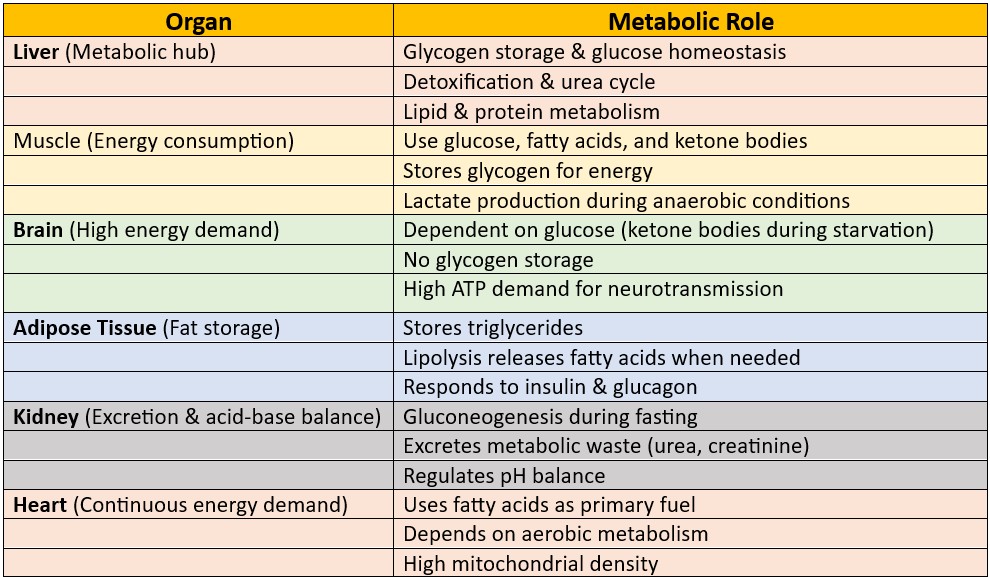Metabolism: An Overview
Metabolism refers to all the biochemical reactions occurring in the body to maintain life. It is divided into two main processes:
1. Catabolism - The breakdown of complex molecules into simpler ones to release energy (e.g., glycolysis, beta-oxidation).
2. Anabolism- synthesizes complex molecules from simpler ones, requiring energy (e.g., protein synthesis, gluconeogenesis)
Metabolic pathways are regulated through various control mechanisms, ensuring efficiency and adaptability in response to the body's changing needs.
Metabolic Pathways
Metabolic pathways consist of enzymatic reactions that convert substrates into final products. These pathways are interconnected and tightly regulated to maintain homeostasis.
Types of Metabolic Pathways


Metabolic control ensures efficiency and prevents energy waste. The key regulatory mechanisms include:
Allosteric Regulation – Enzyme activity is regulated by molecules that bind to sites other than the active site (e.g., ATP inhibits phosphofructokinase in glycolysis).
Covalent Modification – Enzymes are regulated by phosphorylation or dephosphorylation (e.g., Glycogen phosphorylase activation by phosphorylation).
Gene Expression Regulation – Long-term metabolic control via induction or repression of enzyme synthesis (e.g., insulin increases glucokinase expression)
Hormonal Regulation – Insulin, glucagon, epinephrine, and cortisol regulate metabolism as per energy needs.
Compartmentalization – Separation of pathways within organelles (e.g., TCA cycle in mitochondria, glycolysis in cytoplasm) to prevent futile cycles.
Control Mechanisms in Metabolism


Metabolic Profile of Organs
Different organs have specialized metabolic roles based on their function.
BLOG
Join us to explore medical biochemistry intricacies.
WRITE TO US
© 2024. All rights reserved.
